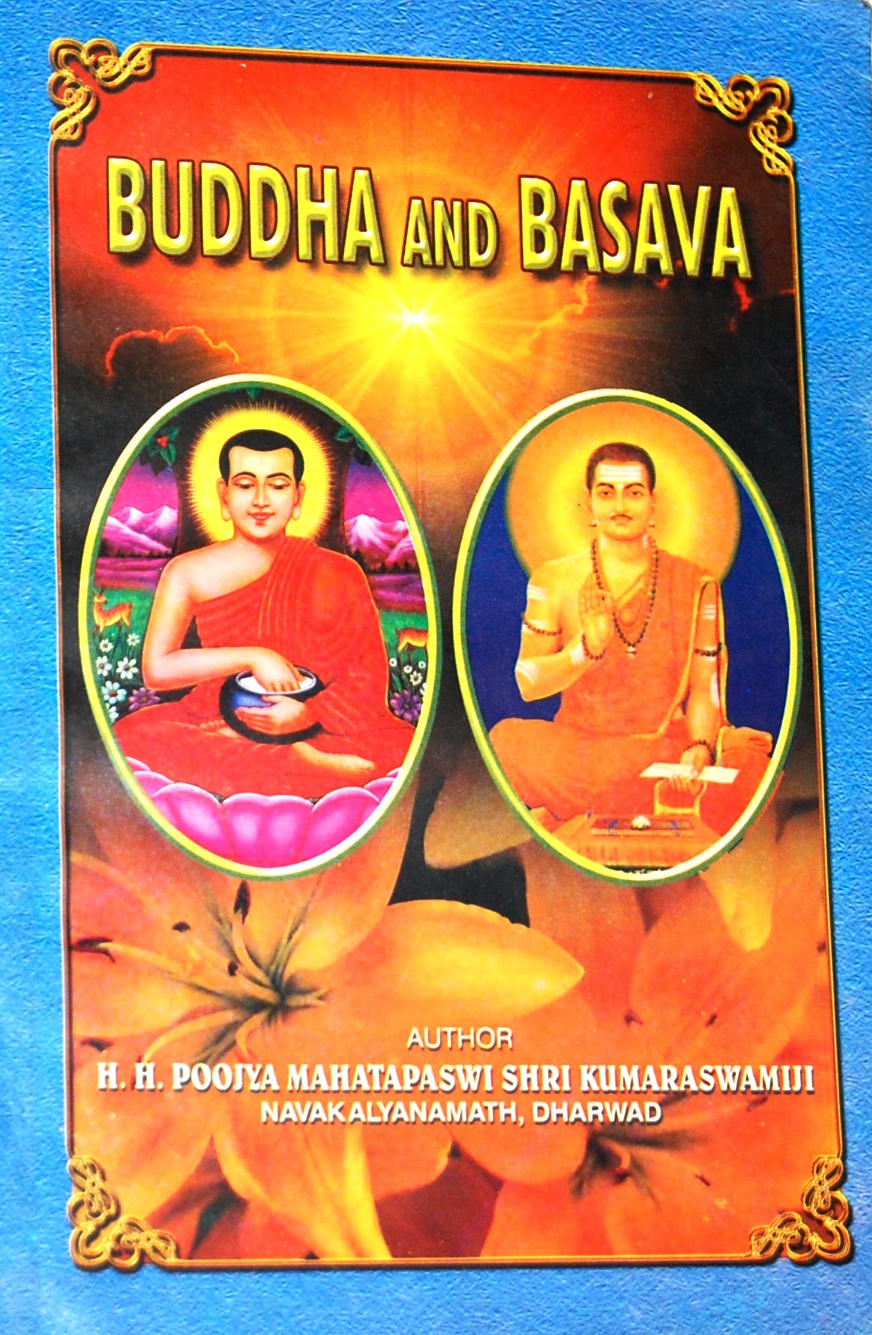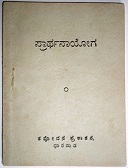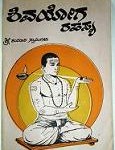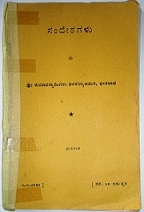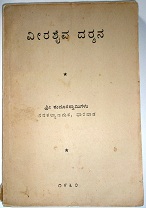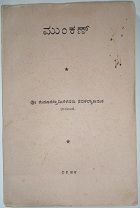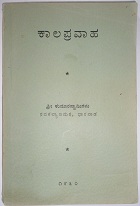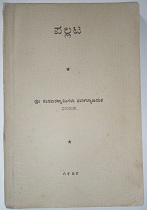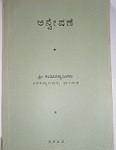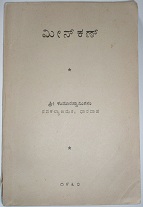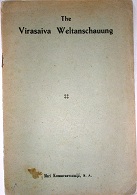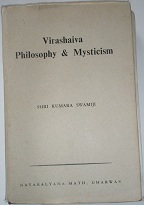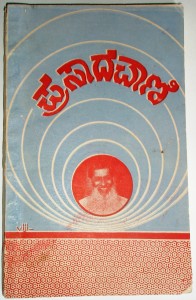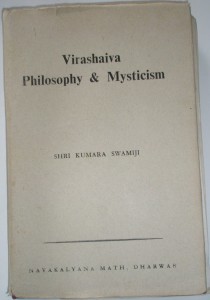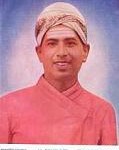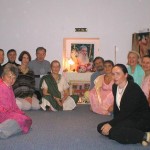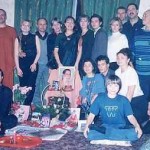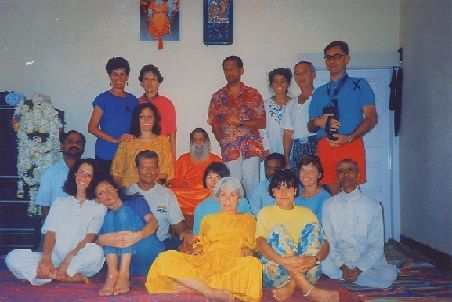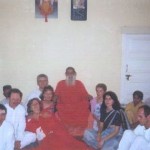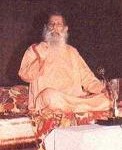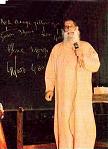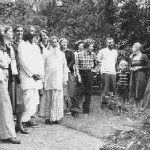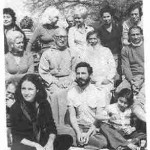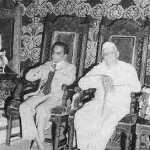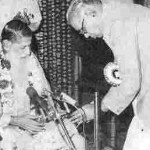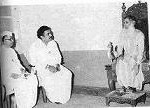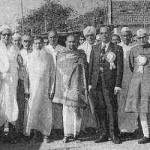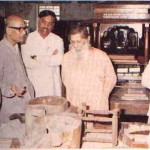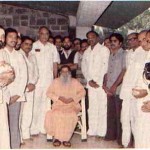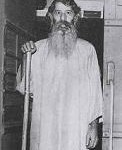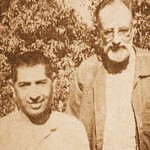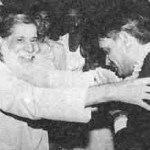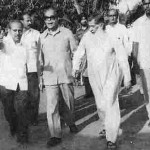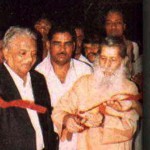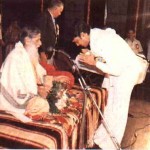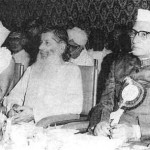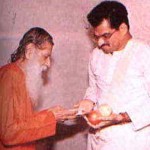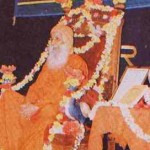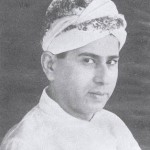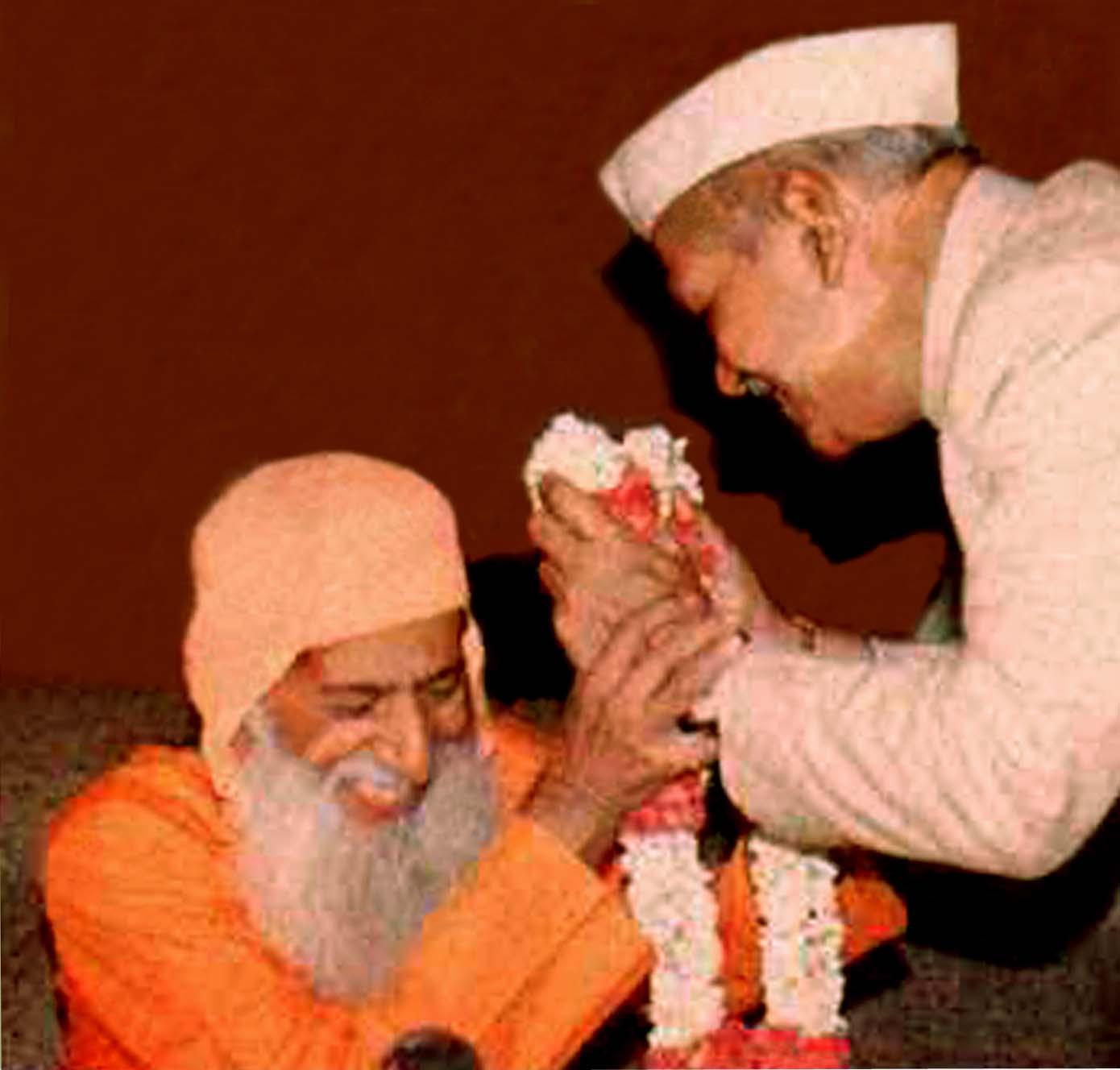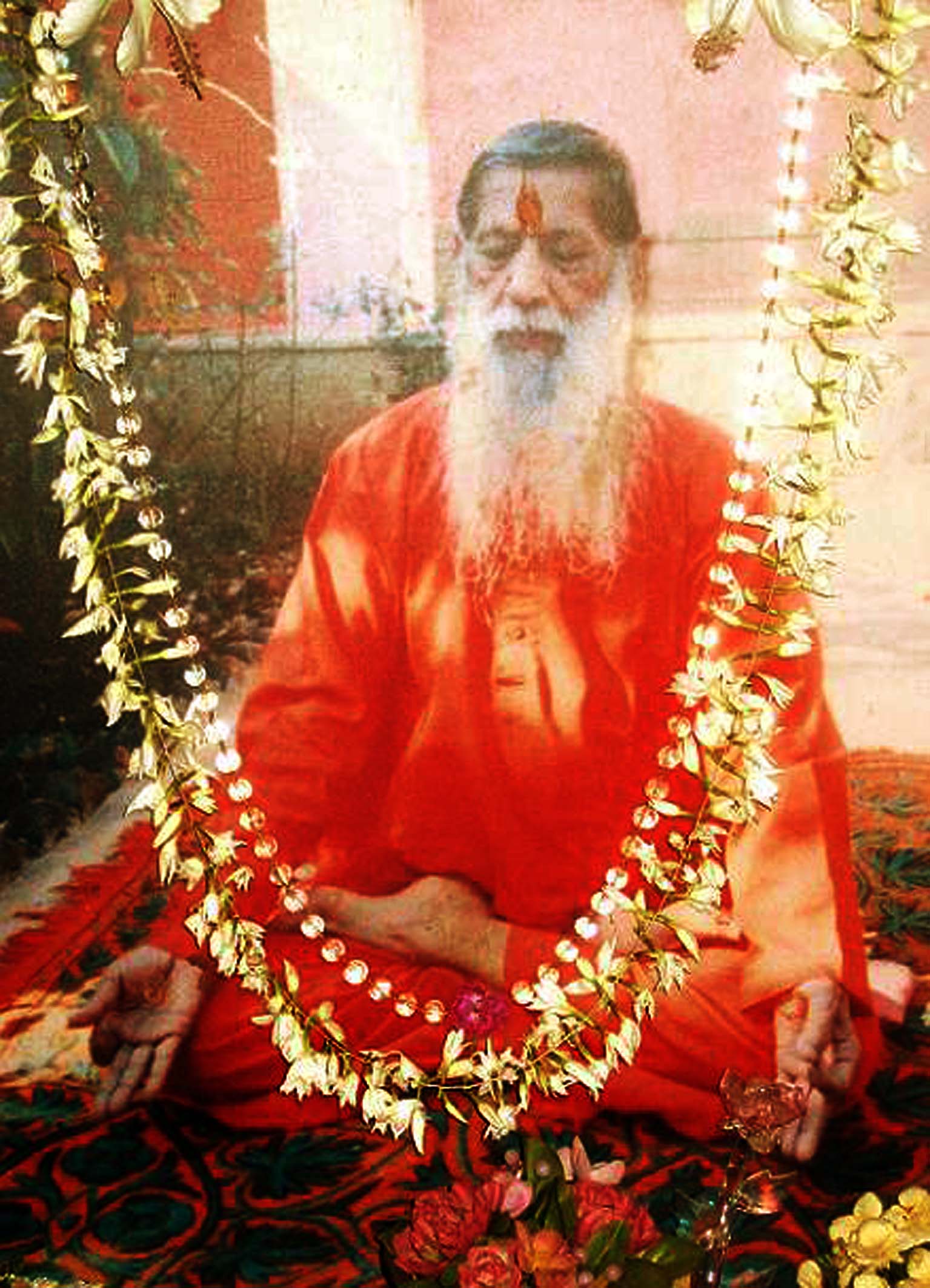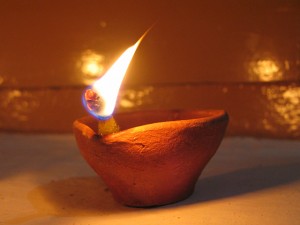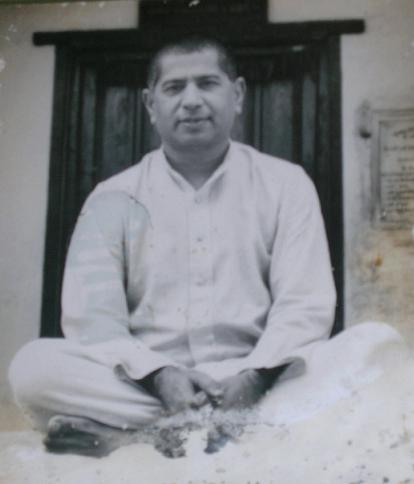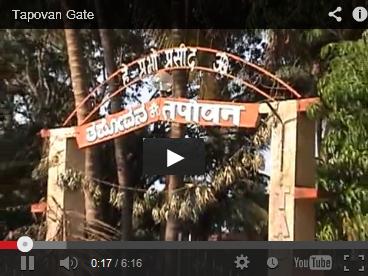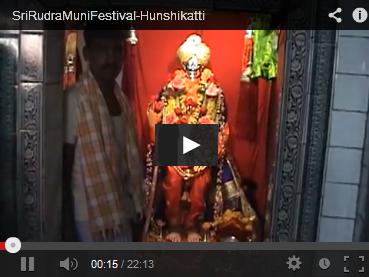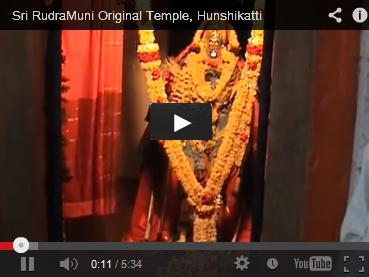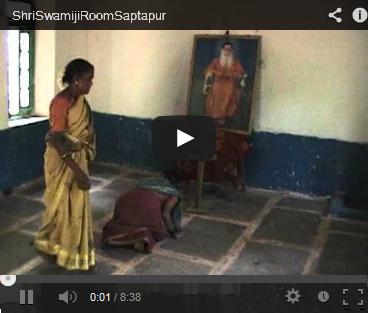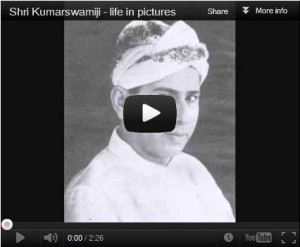No body has yet invented a spiritual calculus in terms of which we may talk coherently about the Absolute and its manifestations. The saints are therefore forced to describe the Absolute in negative terms. In statement such as Prabhu’s the Absolute is equated with nothing, and in a certain sense the equation is exact, for the Ground is certainly nothing. In the phrases used by many Veerashaiva mystics ‘God is not a what, He is that’. In other words the Ground can be denoted as being there, but not defined as having qualities. This is why the Absolute is described as Shunya; and the attainment of the Absolute cannot be had except by union, and union can be achieved only by the annihilation of the self-regarding ego, which is the barrier separating ‘Thou’ or ‘Anga’ from the ‘That’ or ‘Linga’
In the twelfth century, Karanatak witnessed a renaissance remarkable for its religious fervour, social sanity and literary grace. The leader of this renaissance was, in fact, Basava who in collaboration with his contemporary Veerashaiva saints, released the pent-up spiritual forces and led the masses out of the morass of superstition and ignorance into the moral grandeur of the divine life. Basava founded a scoio-spiritual institution named Anubhava Mantapa, through which he wrought a marvelous change in the religious, social and economic conditions of the scoeity. Allamaprabhu, who was the first president of the Anubhava Mantapa, often guided its deliberations, pointing out the path and piloting the aspirants to their destination. The Veerashaiva saints were all mystics. Prabhu was a mystic par excellence. Mysticism is, in fact, the perennial philosophy, a philosophy that is immemorial and universal, for it maintains a metaphysic which recognizes a Divine Reality, substantial to the world of things – corporeal and incorporeal, a psychology that finds in the soul something similar to or identical with Divine Reality, an ethic that places man’s final end in the knowledge of the immanent and transcendent ground. The perennial philosophy involves the study of Reality at the bottom, with practice and morality at the top, with a consideration of metaphysical truth and at the focal with reconciliation of thought and action. The Shunyasampadane is a book which faithfully reflects the tenets of the perennial philosophy of Veerashaivism in its triple aspect.
Rudiments of the perennial philosophy or mysticism may be found among the traditional lore of primitive peoples in every religion of the world and in its fully developed form it has a place in every one of the highly developed religions of the world. But a version of this philosophy was committed to writing more than thirty centuries ago, and since that time the inexhaustible theme has been treated ever and anon, from the standpoint of every religious traditions in all the principal languages of India, Asia and Europe. Shunya-sampadane is an anthology in the Kannada language; it contains a number of selected sayings from the Veerashaiva mystics, chosen mainly for their significance, not only because they effectively illustrate some particular point in the general system of mysticism, but also for their intrinsic beauty and memorableness. These selections are arranged under headings designed to illustrate and where necessary to elucidate the tenets of philosophy.
Philosophy is primarily concerned with the Divine Reality substantial to the world of things and of thoughts. But the nature of this Reality is such that it cannot be directly and immediately comprehended, except by those who have chosen to fulfill certain conditions, making themselves loving, pure in the heart and poor in worldly possessions. When poets and metaphysicians talk about the subject matter of mysticism, it is generally at second hand. But in every age, there have been a few blessed men and women who chose to fulfill the conditions upon which alone, as a matter of fact, such immediate knowledge could be had. Some have left the accounts of Reality which they sought to comprehend and tried to relate in one comprehensive system of thought the given facts of this experience. To such first-hand exponents of mysticism is given the name of saint, sage, prophet or enlightened one. In the Anubhava Mantapa established by Basava, there was an assemblage of more than two hundred Veerashaiva saints, of whom Allamaprabhu was the central cardinal figure.
Straight is the way but narrow is the gate of salvation. There are three principal gates to salvation of which none can be ignored or connived at. In the theologies of various religions, salvation is regarded as deliverance out of folly, evil and misery into happiness, goodness and wisdom. But the mystics aspire to be delivered out of separate selfhood in time into eternity as realized the unitive knowledge of the Divine Ground. Since the Ground ought to be unitively known in the present life, heaven is not an exclusively posthumous condition. He only is completely saved who is delivered here and now. As to the means to salvation, they are ethical, metaphysical and psychological, and have been succinctly summed up with admirable clarity and economy in the six-fold path or Shatsthala. Complete deliverance is subject to the following conditions:
1. Righteous belief in the Linga or the Divine Ground with its corollary of self-denial
2. Righteous means of livelihood or the choice of such profession as are not harmful in their exercise to any human being or any living creature.
3. Righteous action with the aim of creating and maintaining peace and good-will.
4. Awareness or intuitive recollection to be practiced under all the circumstances of life, so that the aspirant may never do evil by mere thoughtlessness.
5. Dedicated commitment to contemplate on the unitive knowledge of the Ground.
6. Perfect penetration into the Divine Ground where the Trinity of the knower, known and knowledge is lost.
Such then are the means which are within the power of the human beings to employ in order to achieve man’s final end and be saved. The very first chapter of the Shunyasampadane gives, in a nutshell, the rationals of the six-fold path or Shatsthala.
There are three gates to salvation: the lower, upper and middle or the central. The lower gate is that preferred by strictly practical teachers like Buddha and Confucius, who have little use for speculation and whose primary concern is with the conduct of man. In the Shatsthala the first two stages: Bhakta and Mahesha – are representative of ethics and morality. Through the upper gate go those whose vocation is to think and speculate – the philosophers and theologians. The last two stages of Shatsthala – Sharana and Aikya represent the speculative aspect of the spiritual religion. The middle gate gives entrance to the devout contemplatives or mystics and the devout contemplation is represented by Prasadi and Pranalingi stages. It is through this middle or central door that we shall make our entry into the subject matter of the Shunya-sampadane. For the psychology of mysticism has its source in metaphysics and issues logically in a characteristic way of life and system of ethics. But we must bear in mind that Shunyasamapadane does not deal with superficial psychology, for the doctrine that is illustrated in this book belongs to ontology rather than psychology – to the science, not of personal ego but of that eternal self in the depth of particular, individualized selves and identical with the Divine Ground. Based upon the direct experience of saints and sages who have fulfilled the necessary conditions of such knowledge, know thy self or Atmanam vidhi is expressed most emphatically in the Shunyasamapadane. The Atman or Anga, the eternal immanent self is one with Linga or the Divine Ground, the absolute principle of all existence; and the final goal of every human being is to discover this fact for himself and to realize the identity of Anga or Linga.
The universe is an everlasting succession of events, but its ground is the eternal now of the Divine spirit. This is the verdict of mysticism. Many a philosopher has denied the existence of an eternal now. To many thinkers right from Hereclitus to Bergson, time and change are fundamental: moreover future events are completely indeterminate and even God can have no knowledge of them. Consequently, God cannot be described as Alpha and Omega. The existence of the eternal now is denied on the ground that a temporal order cannot coexist with another order, which is non-temporal and that it is impossible for a changing substance. This objection would be valid if the non-temporal order were of mechanical nature or if the changeless substance were possessed of spatial and material qualities. But according to the Veerashaiva philosophy, the eternal now is a consciousness, the Divine Ground is spirit and the being of God is Chit or knowledge. That a temporal world should be known and in being known, sustained and perpetually created by an eternal consciousness is an idea which contains nothing self-contradictory.
Prabhu says, “Sharana is the son of time present.” Man starts as an infant in the animal life without anxiety for the future or regret for the past. He grows up into the specifically human conditions of those who look before and after, who live to a great extent, not in the present but in memory and anticipation, not spontaneously but in repentance, fear and hope. He can continue, if he so desires, up and on in a returning sweep towards a point corresponding to the starting place in animality but immeasurable above it. Once more life is lived in the moment, the life now, not of a sub-human creature but of a being in who love has cast out fear, vision has taken the place of hope, and selflessness has put a stop to the positive egoism of complacent reminiscence and the negative egoism of remorse. The present moment is the only aperture through which the soul can pass out of the time into eternity, through which grace can pass out of eternity into the soul and through which divine power (Chit-kala) can pass from one soul in time to another soul in time.
Theology of the Veerashaiva religion has been least preoccupied with events in time and most concerned eternity. It has consistently been the least violent and the most humane in practice. The apostles of Veerashaivism namely Prabhu and Basava were largely responsible for this. They moulded the outlook of the followers to the democratic patterns of thinking and action. Consequently Veerashaivism believes that the inner light is in all human beings and that salvation comes to those who live in conformity with that light and is not dependent on the profession or belief in historical or pseudo-historical events, nor on the performance of certain rites nor on the support of a particular ecclesiastical organization. Its eternity-philosophy strongly denounces the idea that the supreme good is in future time and that any temporal means may be used to achieve that good. Thus Veerashaivism is the most democratic and the least imperialistic in its outlook. Like any other form of imperialism, theological imperialism too is a menace to world peace. Violence will never come to an end until most people accept the true philosophy of life, until mysticism is recognized as the highest factor or common to all religions of the world, until there is a world-wide rejection of all the political pseudo-religions which place man’s supreme good in future time and thereby justify the commission of every sort of present iniquity as a means to that end. Thus, in the final analysis, it is the means that justify the end and not vice versa.
Man suffers because he is imperfect. The capacity to suffer arises where there is imperfection, disunity and separation from an embracing totality. For the individual who achieves unity within his/her own being and union with the Divine Ground, there is an end to suffering. The goal of creation is the return of all sentient beings out of separateness which results in suffering, through unitive knowledge into the wholeness of the eternal Reality. Why do the righteous and the innocent endure undeserved suffering? For any one who conceives of human individuals as loose and separate entities, the question admits of no acceptable answer. But in fact, human individuals are not loose and separate entities; they are all organically related to God, Nature and their fellow-beings. If every being were consciously in a proper relationship with his divine, natural and social environments, there would be only so much suffering as creation makes it inevitable. But actually most human beings are chronically in an improper relationship to God, Nature and Man with the end result that they end up suffering. The righteous man can escape suffering only by accepting it and progressing beyond it. He can accomplish this only by being converted from righteous to total selflessness and God-centeredness and ceasing to be just a good citizen and becoming perfect. The difficulties in the way of such a transfiguration are obviously enormous; but it is easy to accomplish if one wills it.
The Divine Ground of all existence is a spiritual Absolute, ineffable in terms of discursive thought but susceptible of being directly experienced and realized by intuition. The Divine Ground or Linga has a hierarchy which reveals in the aspects of Bhavalinga, Pranalinga and Ishtalinga. Bhavalinga is the transcendental aspect of the Divine; Pranalinga is its universal or cosmic aspect while Ishtalinga is its individual aspect. The distinction between the Transcendental, the cosmic and the Individual Divine is not any arbitrary invention, but it is native to the perennial philosophy. It is a recognized European teaching current in the esoteric tradition of the Catholic church where there is another explanation of the Trinity – the Father, the Son and the Holy Ghost. In essence it exists in all spiritual disciplines that recognize the omnipresence of the Divine. In the Veerashaiva discipline, it goes by the name of Shiva, Shakti and Sharana. As for the idea itself, there is a difference between the individual, the cosmos in space and time and something that exceeds this cosmic formula. There is a cosmic consciousness experienced by many which is quite different in its scope and action from the individual consciousness and if there is a consciousness beyond the cosmic, infinite and essentially eternal, not merely extended in time, that also must be different from these two. If the Divine manifests Himself in these three, it is then conceivable that in His working He may differentiate Himself so much that we are driven if we are not to confound all truth of experience, if we are not to limit ourselves to a mere static experience of something indefinable to speak of the triple aspect of the Divine.
In the practice of yoga, there is a great difference in one’s way of dealing these three possible realizations. If anybody realizes only the Divine as that which moves secretly all his personal being and which, he can bring forward out of the veil, or if he builds up he image of that Godhead in his members, it is a limited realization. If it is the cosmic Godhead that he realizes, losing in it all personal self, that is a wide realization, but he becomes a mere channel of the universal power or Shakti and there is no personal consummation for him. If he shoots up to the transcendental realization only, he loses both his self and the world in the transcendent Absolute. The Sharana can have all these possible realizations, because he moves securely on the three levels of the Divine. The Shunyasampadane presents harmonization of all the three aspects of the Divine metaphysically and psychologically and ethically, since its aim is to realize and manifest the Divine in the world.
“Behold but one in all things” – this is the voice of mysticism. There is a way to reality in and through the soul and there is a way to reality in and through the world. The best way is that which leads to the divine subject and object. To discover God exclusively within oneself is easier than to discover Him in the world of things and living creatures. It is easier because the heights within reveal themselves to those who are ready to exclude from their purview all that lies without, though this exclusion is a painful process, the fact remains that it is less arduous than the process of inclusion by which we come to know the fullness as well as the heights of spiritual life. When there is inclusive concentration on the heights within, there is a general denial of life and suppression of senses. But when the hope is to realize the divine ground in the world as well as in the soul, temptations and distraction must not be avoided but sublimated and used as opportunities for spiritual advance. The Shunya-sampadane teaches the way to spiritual knowledge in its heights and in its fullness, by affording the best account of the psychology of man for whom one and the many are the same viewed from different angels and standpoints.
To see God in the world is to recognize the sacredness of Nature. Since Nature is sacred, subhuman lives and things are to be treated with respect and understanding. His wish is to work with Nature in order to produce material and social conditions in which individuals can realize the Divine at all levels from the physiological up to the spiritual.
This important practical corollary follows from the concept of Kala or art as adumbrated by the Veerashaiva philosophy. The whole of Nature is envisaged as a divine art and God as a divine Artist. The terms Nada, Bindu and Kala are very significant. Nada represents Shiva, the static divine, Bindu, Shakti, the dynamic Divine; out of the union of Shiva and Shakti, Kala, the Divine creation or Srishti is born. Hence for the Sharana the creation or the world is no longer an illusion: it is a place of enlightenment. In the words of Thomas Traherne, “The world is a mirror of Infinite Beauty.” It is a temple of Majesty. It is a region of light and peace. It is the paradise of God. It is the place of angels and the gate of Heaven. He who has eyes can see it, he who has mind can regard it.”
In the Vachana literature, the path of spirituality is described as a knife-edge between abysses. On one side is the danger of mere rejection of life and escape from it, on the other hand the danger of mere acceptance of life and the enjoyment of life and the enjoyment of things which should only be used as instrument. Both of them are the work of the unregenerate self or ego. The wild ox, symbolizing the unregenerate self, is caught, made to change its direction, then tamed and transformed. Regeneration goes so far that the ox is completely lost, so that nothing remains to be pictured but the full-orbed moon, symbolizing the self or Atman. What is needed here is a process of conscious discrimination between the personal self or ego and the self or Atman that is identical with the Ground: the result of this discrimination is a sudden and complete reversion of consciousness, and the realization of a state of no-mind, which may be described as the freedom from perpetual and intellectual attachment to the ego. This state of no-mind exists, as it were, on a knife-edge between the carelessness of the average sensual man and the strained over-eagerness of the zealot for salvation. To achieve it, one must walk delicately and to maintain it, must learn to combine the most intense alertness with a tranquil and self-denying passivity. The most indomitable determination with a perfect submission to the leaning’s of the spirit. Prabhu, therefore, stresses the need for the intellectual humbleness and docility, for he says that the highest state is to be effected by effacement of ego.
In the spiritual path progress is, as it were, a long knife-edge on one side lurks the Scylla of egocentric austerity, on the other the charybdis of an uncaring quietism. Both the extremes must be avoided. The exponents of mysticism inculcate the holy indifference which is neither stoicism nor mere passivity; it is rather an active resignation. Self-will is renounced, not that there may be total holiday from willing but that the divine will may use the mind and body of aspirant as its instrument for good. Until the aspirant puts an end to particular attachments there can be no love of God nor any charity towards all creatures for God’s sake. The Veerashaiva philosophy strikes the right chord when it says that the soul held by the bonds of human passions, however slight they may be, cannot make its way to God.
It is by losing the ego-centric life that the aspirant can discover the latent spiritual life which he shares with the Divine Ground. This new-found life is more abundant than the other and of different and higher kind. Its possession is liberation into eternal and liberation is beatitude. Yes, for God, who is one with the self, is not only the being and knowledge but also the bliss.
Man’s final end or the purpose of his existence is to love, know and be united with the immanent and transcendent Godhead. This identification of the self with God or the Supreme can be achieved only by the death of the ego and rising of the spirit. The total identification brings with it the manifestation of God’s power, knowledge, bliss and beauty to some extent.
Hui Heng remarks, “When not enlightened, Buddhas are no other than ordinary beings. When there is enlightenment, ordinary beings at once turn into Buddhas.” Every human being can thus become a Buddha or the enlightened One by self realization. He must be shown the way and he must be aided by Divine Grace to become enlightened. Thus the enlightened can reveal the way of enlightenment to others and help them actually to become what they potentially are capable. The eternity which transforms the human into the divine is not the experience of mere persistence after bodily death. There will be no experience of the Supreme unless there is the same knowledge within the enlightenment, the world of time and matter. By precept and by example, the Bodhi teaches that this transforming of knowledge is possible, that all sentient beings are called to it and that sooner or later in one way or another; all must finally come to it.
To common sense, the world appears as consisting of an indefinite number of successive events, involving an infinite number of separate individual things and lives. This is a view held by Hume and the Buddhist’s. Hume observes: “Mankind are nothing but a bundle or collection of different perceptions, which succeed each other with an inconceivable rapidity and are in a perpetual flux and movement.” An almost identical answer is offered by the Buddhists, whose doctrine of Anatta or Anatma is the denial of any permanent soul, existing behind the flux experience and the various pshyco-physical skandhas which constitute the more enduring element of personality. Hume and the Buddhists give a realistic description of the ego in action, but they fail to explain how or why the bundles ever become the bundles in the first instance. In the light of mystic experience, we are forced to abandon this doctrine in favour of the notion, that behind the flux and within the bundles, there exists some kind of permanent soul by which experience is organized and which in turn makes use of that organized experience to become a particular and unique personality. This unique personality is immortal and the soul is immortal in the sense that being and immortality are the same. This introduces us to metaphysics proper in which we are concerned with the Absolute. But the Absolute or the Divine Ground is not merely a continuum, but it is also out of time and different not merely in degree but also in kind. Hence in all expositions of mysticism there is the frequency of paradox and of verbal extravagance. No body has yet invented a spiritual calculus in terms of which we may talk coherently about the Absolute and its manifestations. The saints are therefore forced to describe the Absolute in negative terms. In statement such as Prabhu’s the Absolute is equated with nothing, and in a certain sense the equation is exact, for the Ground is certainly nothing. In the phrases used by many Veerashaiva mystics ‘God is not a what, He is that’. In other words the Ground can be denoted as being there, but not defined as having qualities. This is why the Absolute is described as Shunya; and the attainment of the Absolute cannot be had except by union, and union can be achieved only by the annihilation of the self-regarding ego, which is the barrier separating Thou or Anga from the That or Linga.
– OM SHANTI | OM SHANTI | OM SHANTIHI –
This article ‘Philosophy of Veerashaivism’ is taken from H.H.Mahatapasvi Shri Kumarswamiji’s book, ‘Veerashaivism: History and Fundamental Concepts’.











